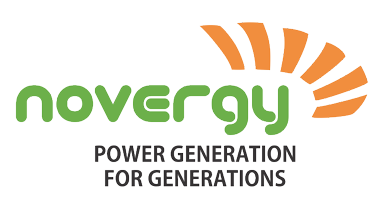In this contemporary world, electricity has become an essential part of life. With each passing year, the power usage of every household has increased threefold as compared to the energy resources. In order to accommodate these surging needs, people are switching to a sustainable source i.e solar energy. Photovoltaic solar technology has become much more prominent because of huge availability, lower costs, and quick installation.
However, the energy output continues to be a big barrier to the widespread adoption of solar power. This is why EPC companies are on a lookout to find tools that can help mitigating the higher cost of maintenance and regulating the power usage of solar panels. This way, they can help users unleash the potential of a solar system in true sense and reap maximum rewards from the installation.
The basic parameters which affect the output of a solar solution are current, voltage, irradiance and temperature. Therefore the real-time solar output surveillance system is essential to strengthen the effectiveness of the PV system by weighing it with the experimental outcome to trigger preventative measures.
This is where the Internet of Things comes into play. IoT applications in clean energy generation include smart sensors that are linked to the production, transmission and distribution devices. These instruments allow solar investors/ commercial clients to remotely track and manage the operation of the entire solar system in real time. It minimises the operational expenses and reduces our reliance on fossil fuels.
Applications of IoT in solar industry
The Internet of Things (IoT) is an interesting concept. It is quite similar to the Internet, as it covers almost every aspect of our lives today. From transportation to entertainment, from medical to retail, the Internet of things is now a part of each and everyone’s lives. This has given rise to a number of industries that are now leveraging the power of the Internet. From hardware makers and distributors to service providers and retailers, there are almost countless industries that are starting to explore possibilities of tapping into the Internet of things.
One of such industries is the solar industry. Things have evolved a lot since the early nineties – back then, solar panels were big and bulky, making them unattractive to most consumers. As of today, the Internet of things (IoT) has made it possible to manufacture lightweight solar cells that can be attached to rooftops and on the vehicles. This would allow homeowners and other solar investors to harness the sun’s power and eliminate their dependency on local utility companies.
With that, the Internet of Things (IoT) is now evolving as an innovative technology which makes things quite intelligent and user-friendly by means of a protocol stack and cloud platform. These advanced IoT systems embedded with software, network connectivity and sensors allow the PV system to collect, monitor, and exchange data.
IoT-based solar panel tracking is designed for online simulation and performance enhancement. It enables to initiate preventive maintenance, map out the cause of the accident and the location where the breakdown occurred.
Not just that, EPC providers, power suppliers, solar investors and utility companies can govern their solar energy resources by utilizing the power of IoT. This, in essence, provides them with beneficial insights to make data-driven decisions. You will also be able to ascertain and investigate power usage trends for users by utilizing the IoT generated data.
Novergy’s IoT-based intelligent monitoring system
The IoT monitoring system plays a vital role in understanding;
How well the solar panels are performing?
and
How much energy yield are you getting?
In a big solar installation facility, there are arrays where hundreds and sometimes thousands of solar panels are tied together. These modules are then wired back to a midline, where direct current (DC) electricity from the panels is converted to alternating current (AC) through the Solar inverter, which can be used later to power the installation site or building. To monitor that, Novergy makes use of wired sensor devices.
With Novergy solar system, users can get access to an online portal. This smart online monitoring and troubleshooting system is integrated with automated IoT devices and can be login through either PC or an Android/iOS application. Users can gather real-time information, analyse the past data, compare the trends based on multiple parameters and export the graphs as well. Not just that, users will be notified through SMS/email in case the platform observes any fault, problem areas and breakdown.

Utilizing these intelligent monitoring platforms allow users and vendors to proactively manage the failures in time to ensure efficient performance. It assists you in addressing the efficiency issues by generating maximum power output against the defective and dusty panels.
It tracks the solar system constantly and communicates various parameters via the IoT network to the server. We utilise IOT platform to transmit solar variables via a gateway to a cloud server (over user ethernet) high-performance web technology allows users to access data in structured formats and helps make informed decisions in a timely manner.

In situations such as performance below clear limits or a certain kind of malfunctioning, the alarms generated from the panel act as a true saviour. This allows for very smooth and intuitive remote monitoring/handling of solar plants, which fixes faults within defined times.

Over to you
A system that integrates IoT technology allows integration of automated smart devices into the solar solutions to boost efficiency. These monitoring systems can optimise energy output and help you identify the best conducive conditions for energy generation. To know more about Novergy’s state of the art solar solutions and monitoring systems, visit www.novergysolar.com

